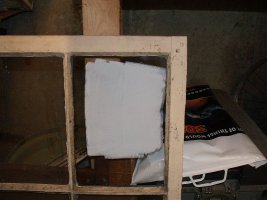mherrcat
Contributing Partner
I've been working on refurbishing my boom and was at the point of putting on the first coat of Perfection. Sanded the final coat of Epoxy Primecoat, vacuumed the dust, wiped the boom down with lacquer thinner. Mixed up a small amount of the Perfection according to directions in correct ratio. Did not thin as it seemed to be very thin already.
When I started to roll it on it immediately started to bead up like there was oil or something on the surface of the boom. I wiped it off with 2333N thinner then wiped the whole boom down again with 2316 solvent. (I was running out of 2333 and wanted to keep the rest for thinning if necessary; anyway, the 2333 takes longer to dry.) Tried to roll on the Perfection again and got the same results. Wiped it all off again.
The Perfection seems very thin. When I tried tipping it off (before I gave up and removed it all) the brush almost wiped it right off completely; and I was barely touching it with the tip of the expensive Badger hair brush.
I wanted to have the boom finished this weekend but now I have to wait until next week so I can talk to the Interlux tech people.
Somebody tell me what happened.

When I started to roll it on it immediately started to bead up like there was oil or something on the surface of the boom. I wiped it off with 2333N thinner then wiped the whole boom down again with 2316 solvent. (I was running out of 2333 and wanted to keep the rest for thinning if necessary; anyway, the 2333 takes longer to dry.) Tried to roll on the Perfection again and got the same results. Wiped it all off again.
The Perfection seems very thin. When I tried tipping it off (before I gave up and removed it all) the brush almost wiped it right off completely; and I was barely touching it with the tip of the expensive Badger hair brush.
I wanted to have the boom finished this weekend but now I have to wait until next week so I can talk to the Interlux tech people.
Somebody tell me what happened.

